|
Last week’s topic was the All-America Selections awards, and as promised, this week I will share the new regional award winners for our gardens.
After more than eighty years of awarding plants that had proven themselves throughout the US and Canada, AAS realized that their rigorous testing revealed top-performing plants that would never see an award. Plants well-suited to growing conditions in some climates would be disqualified for less-than-stellar performance in others. Without compromising standards, the regional awards have been created to bring these locally proven plants to the attention of gardeners who can use them. Six geographic regions with similar climate conditions were established. Perhaps not surprisingly, we are part of the Great Lakes region, along with Ohio, Indiana, Illinois, Wisconsin and Ontario, Canada. Since the AAS organization had been compiling detailed data for many years, they decided to review three year’s history to announce the first regional winners for 2014. Any additional qualifying plants are announced annually along with the national winners. So far, there are six winners for our Great Lakes region—five vegetables and one in the ornamental bedding plant category. A compact sunflower is the lone ornamental. Suntastic Yellow with Black Center sports blooms that are five to six inches in diameter—quite impressive given that plants grow less than two feet tall. And unlike traditional sunflowers, Suntastic blooms in three successive waves of five to eight flowers, producing up to 20 flowers per plant through the summer. Flowers 50-65 days from planting. Cinderella’s Carriage pumpkin is the first hybrid variety with the distinctive Cinderella-pumpkin shape and near-red color. Hybrid vigor translates to higher yields and greater resistance to powdery mildew on the foliage. Delicious as well as decorative, each plant will produce as many as seven pumpkins ranging between 25 and 35 pounds apiece. About 100 days from sowing to harvest. Not surprisingly, Pick A Bushel cucumber produces high yields of crisp, sweet cukes. Heat-tolerant, semi-bush plants are well-behaved in the garden and can also be grown in a large container. Begin harvesting at three to six inches, about 50 days from planting. Great for pickling gherkins or pickling spears, and delicious fresh. Bopak is the first pak choi to win an AAS award. This mild-flavored cabbage-relative is popular in Asian cuisine. Tender leaves are great in salads or sandwiches, and the broad, crisp white leaf stalks can be used like celery. Harvest as a baby vegetable 45 days from transplant, or allow heads to mature at about eight inches tall. Like most cole-crops, pak choi is best in cooler weather, but this improved variety keeps its good flavor even in hot weather. Chef’s Choice Pink is a large 12-14 ounce beefsteak-type tomato with the perfect balance of sugar to acidity. Disease-resistant plants are indeterminate, and require staking to support their abundant yield of 20 to 30 plump fruits. For excellent flavor with a little heat, try Hot Sunset pepper. This 7” banana or wax pepper is thick-walled and excellent fresh, grilled, roasted or pickled. Spicy, but not fiery, averaging about 650 Scoville units, compared to a sweet bell pepper at 0 units, or a chipotle or jalapeno at around 2,500. Harvest about 85 days from transplant. AAS awards are an excellent tool for identifying superior choices for your garden. However, these regional awards will require some diligence. In researching for this column, I found that some mail order sources simply identified varieties as AAS winners, without any detail. To be sure that you are choosing a national or great lakes regional winner, reference the AAS website: www.all-americaselections.org, or save a copy of this column.
48 Comments
With the new year comes the rainbow of colorful catalogs spilling with the latest flowers and vegetables, and you’ll undoubtedly find them peppered with the distinctive logo for the All-America Selections award.
This is one of the few award programs focused on the home gardener. Unique in today’s marketplace, the All-America Selections program (AAS) is not a brand affiliated with a marketing organization or a particular company, plant breeder or distribution company. It is a contest, a rigorous unbiased garden trial and evaluation that helps identify the best new plant varieties. Established in 1932, the goal was to provide gardening and farm publications and the budding garden club movement with reliable information on the best new garden seeds. The program was a great success, and over the years the award has become a trusted indicator of a good plant choice for the garden. Each year companies submit their latest flower and vegetable seeds for consideration for the award. Trial gardens must meet some rather exacting criteria, and are distributed across North America in 30 states and five Canadian provinces. We are fortunate to have three of these trial sites in Michigan, one in East Lansing on the Michigan State University campus, another near Grand Rapids, and a third in Litchfield (south of I-94 and East of I-69 South). Plants must be new and previously untried, and are evaluated for significant improvement over existing varieties of their type. For flowers, this includes novel flower forms or colors, flowers showing above the foliage, fragrance, length of flowering season, and pest and disease tolerance. For vegetables, earliness to harvest, total yield, fruit taste and fruit quality, ease of harvest, plant habit and disease or pest resistance. Judges must be skilled and impartial, and are qualified and trained by AAS to apply standard criteria when evaluating the plants. Judges are not paid for their participation, and are typically horticultural professionals from academic and industry backgrounds. Each fall, the scores are tallied and awards announced to the horticultural press, cooperative extension agents and garden clubs, with no consumer-direct promotion from the AAS. In addition to the trial gardens for evaluation of the potential new winners, AAS encourages display gardens for plants that have won the award. Gardens may feature the vegetable or flower winners, or both, and can be found in 45 states, the District of Columbia, six Canadian provinces and Japan. In Michigan, you’ll find them in Frankenmuth, Kalamazoo, Midland’s Dow Gardens, Tipton’s Hidden Lake Gardens, and near the trial gardens in East Lansing and Lichtfield. The AAS supplies these gardens with seed of about 50 varieties, including current year winners, four years previous winners, and a preview of the next year’s winners. Gardens are required to have access to a greenhouse to grow the seed for transplant, provide an attractive setting, good presentation, and ensure that displays are well-labeled for visitors. The program continues to evolve, and in 2013 a new award designation was added for regional winners. Program leaders realized that gardening success is very much climate-dependent. The rigorous testing might show, for example, that a plant is very well-suited for the humidity and heat of our summers, but fail to win a national award because it falters in the dry extremes of the southwest. A regional award will highlight those more specialized plants for gardeners in their ideal climate. New for 2015, AAS is expanding the program beyond seed-grown plants—for the first time also considering those that are vegetatively propagated. Over the next few weeks I will highlight the latest winners, options to consider as you peruse those catalogs for spring planting ideas. Another seed catalog came in the mail today.
I have a love/hate relationship with the things. I love to see them come in—sunny faces on a winter day, and so much more welcome than political advertisements and holiday bills. Beautiful pictures, loaded with promise, and all of the new and exciting varieties that will be available for the coming season. Then again, I’ve already received about a dozen, and it’s still early. The coffee table overflows. And every year I promise myself I will wait until spring, but I’m considering a few new cultivars that I need to order, since I’ll never find the plants locally. Vegetable seed is one of the best things to order through the mail. Even the best garden center has limited a selection of varieties compared to the seed catalogs, whether you’re looking at started packs of plants in the springtime, or browsing the seed racks now. And many vegetables grow best from seed sown directly in the garden, so there’s no extra work involved to start your own seed indoors, not to mention keeping the seedlings healthy and making a successful transition to the garden in spring. Even those that do have to be started early, like peppers and tomatoes, are easier than most flowers, with a good germination rate and a tough constitution. Is there a zucchini that shows some restraint? Produces enough to enjoy, but not so much that you’re eating it three meals a day and you have to leave baskets on neighbor’s porches in the middle of the night? Try ‘Costata Romanesco’ from Johnny’s Select Seeds, promising half the yield of hybrids, but better flavor, texture, and an abundance of male blooms for cooking. Choose from dozens of varieties of the new hybrid sweet corns, offering longer storage after picking and much sweeter flavor. The seed catalogs do a great job of identifying the varieties by type; progressively sweeter from the original ‘su’ high sugar hybrids, to ‘sh2’ (super sweet hybrids) and ‘se’ (sugary-enhanced). Keep in mind that you’ll need to plant sweet corn in blocks, and keep the different types (including field corn or popcorn) separated by 250-300 feet and/or 3 weeks maturity time. This is to prevent cross-pollination—because you’re eating the seed, pollination affects the current crop. And perhaps most importantly, mail order offers a wider range of different types of vegetables. You might find okra seed at the retail store, but rarely okra plants. Through the seed catalogs, you can also find ‘Burgundy,’ an All America Selections winner with deep red leaves and fruit, and even ‘Little Lucy’ a compact version that reaches only two feet tall. Both have pastel yellow flowers that contrast beautifully with the leaves. In categories where choices are usually rare in the seed rack, browse through dozens of different radishes, lettuces, cauliflowers, beans or greens like collards, mustard, radicchio and pak-choi. Totally Tomatoes and Tomato Growers Supply are catalogs devoted exclusively to peppers and tomatoes, so you can only imagine the options there! Heirloom and organically produced seed are becoming quite popular, and the heirlooms offer unique flavors, colors and shapes that are difficult to find in the produce department. Most of the seed catalogs offer a few varieties of heirlooms and organics, and there are some that specialize in them, such as Seed Savers Exchange, Seeds of Change, D. Landreth Seed Company, and Nichol’s Garden Nursery, just to name a few. The internet is a great tool for researching or locating a particular variety, but there is something enjoyable about having the printed catalog to hold. I’ll have mine tucked full of notes and lists of things that pique my interest, then go back through and compare choices from the different companies until I can make my decisions. It’s a lovely way to spend a cold winter day, dreaming of sun-ripened days. |
AuthorsJulie has worked in the horticulture world for over 25 years. She has a degree in English Literature from University of Michigan. She is a member of the American Garden Writers Association. Archives
November 2017
Friends in the business
We recommend the plants and services offered by Nash Nurseries. Categories
All
|

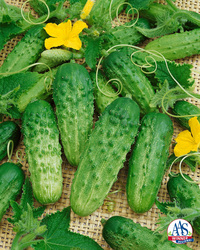
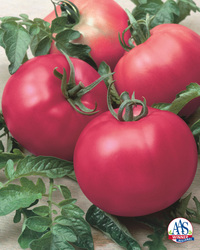
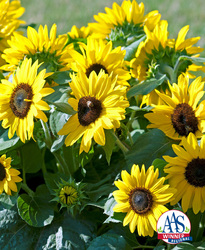
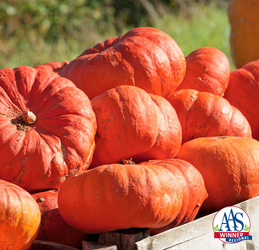
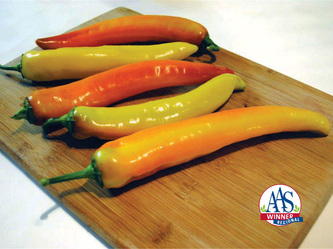
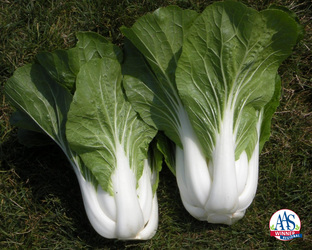
 RSS Feed
RSS Feed